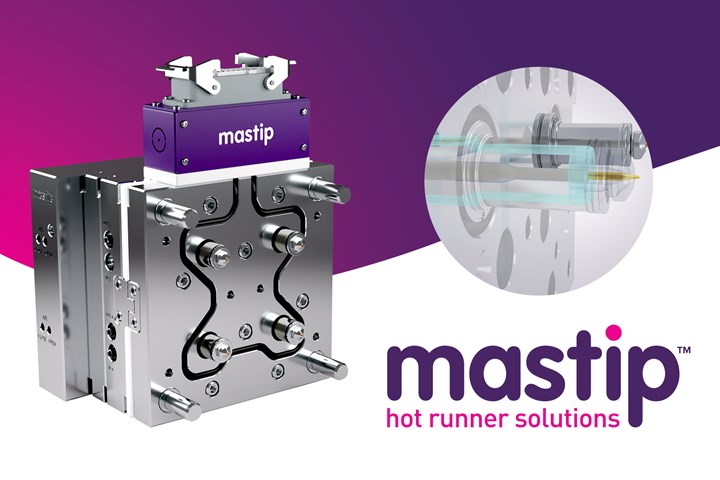Uniform Temperature Profile Key to LSR Molding Technology
Mastip’s Aquilo LSR solution achieves a consistent thermal profile and uniform cooling for a high-quality gate and improved part quality overall.
A liquid silicone rubber (LSR) molding solution from Mastip caters to the needs of its large moldmaking and molding customer base who are facing challenges in achieving a uniform cooling profile from the molding machine to the mold in a repeatable process.
Mastip’s LSR solution features a “cold deck” design that includes cooling channels in the mold plates, manifolds and nozzles. This design is said to promote that the mixed material remains in its uncured condition before entering the heated cavity plates.
Additionally, the use of valve gating technology improves balance between cavities and from shot to shot, minimizing material curing in the gate between cycles. Sequential timing of the valve gates is the key to well-balanced cavities. As excessive flashing and material curing in the gate can cause defects in the molded part and reduce its quality, the use of Mastip’s LSR cold deck results in improved part quality and reduced waste, the company notes.
Mastip’s CR04 and CR06 dedicated LSR nozzles are designed with cooling channels extending towards the valve gate nut for a consistent thermal profile along the nozzle. This design is said to enable optimal control of the valve gate nut temperature, which is critical in consistently producing high-quality LSR parts.
The consistent thermal profile along the nozzle also ensures that LSR flows smoothly and uniformly into the part, resulting in a high-quality gate and improved part quality overall. This is important in industries where precision and quality are critical.
With its LSR technology, Mastip aims to solve challenges in uniform cooling for a repeatable and shorter production cycle, ultimately delivering higher-quality products to customers in various industries.
Related Content
-
How to Eliminate Chatter
Here are techniques commonly used to combat chatter and guidelines to establish a foundation for optimizing the moldmaking process.
-
Treatment and Disposal of Used Metalworking Fluids
With greater emphasis on fluid longevity and fluid recycling, it is important to remember that water-based metalworking fluids are “consumable” and have a finite life.
-
Solving Mold Alignment Problems with the Right Alignment Lock
Correct alignment lock selection can reduce maintenance costs and molding downtime, as well as increase part quality over the mold’s entire life.















